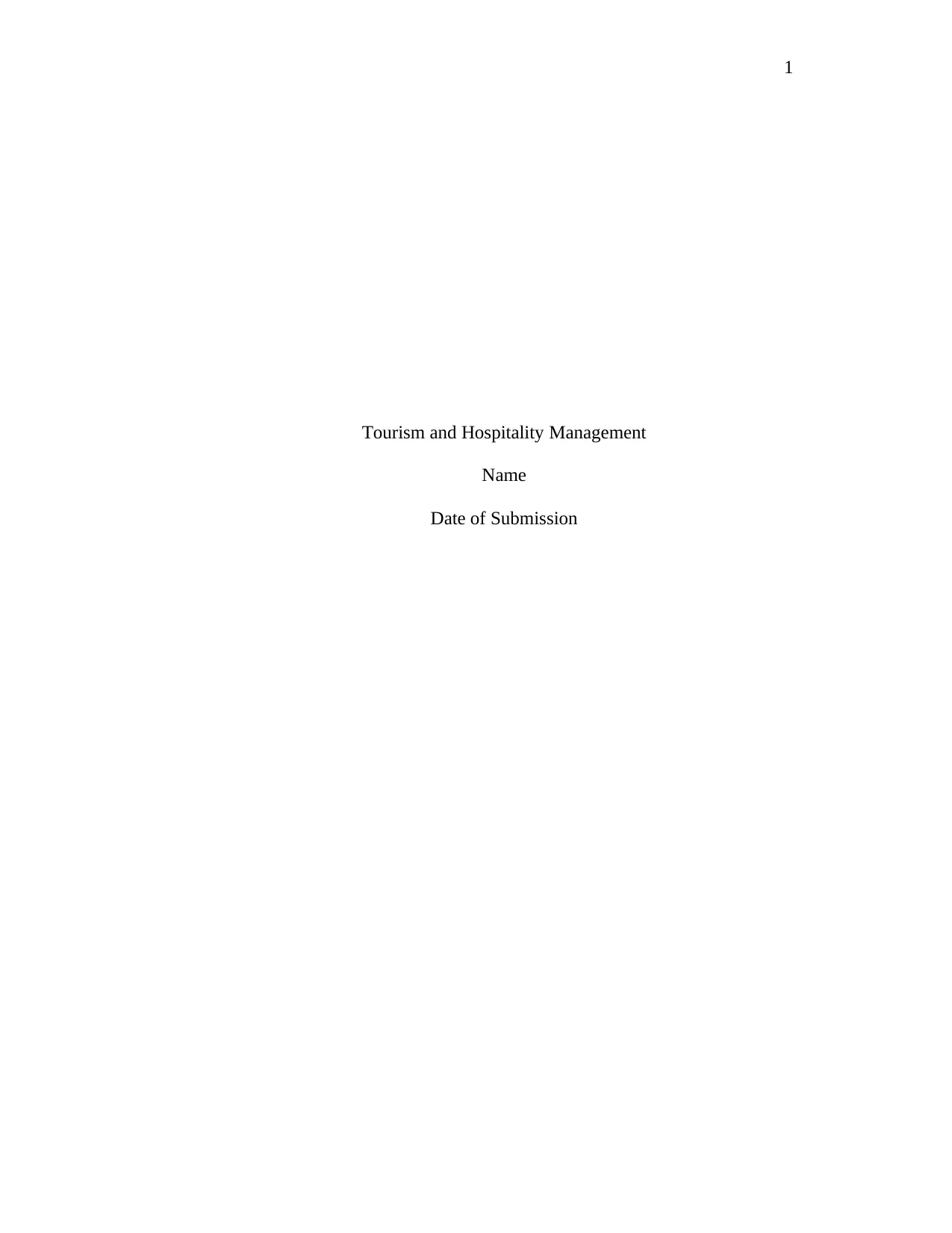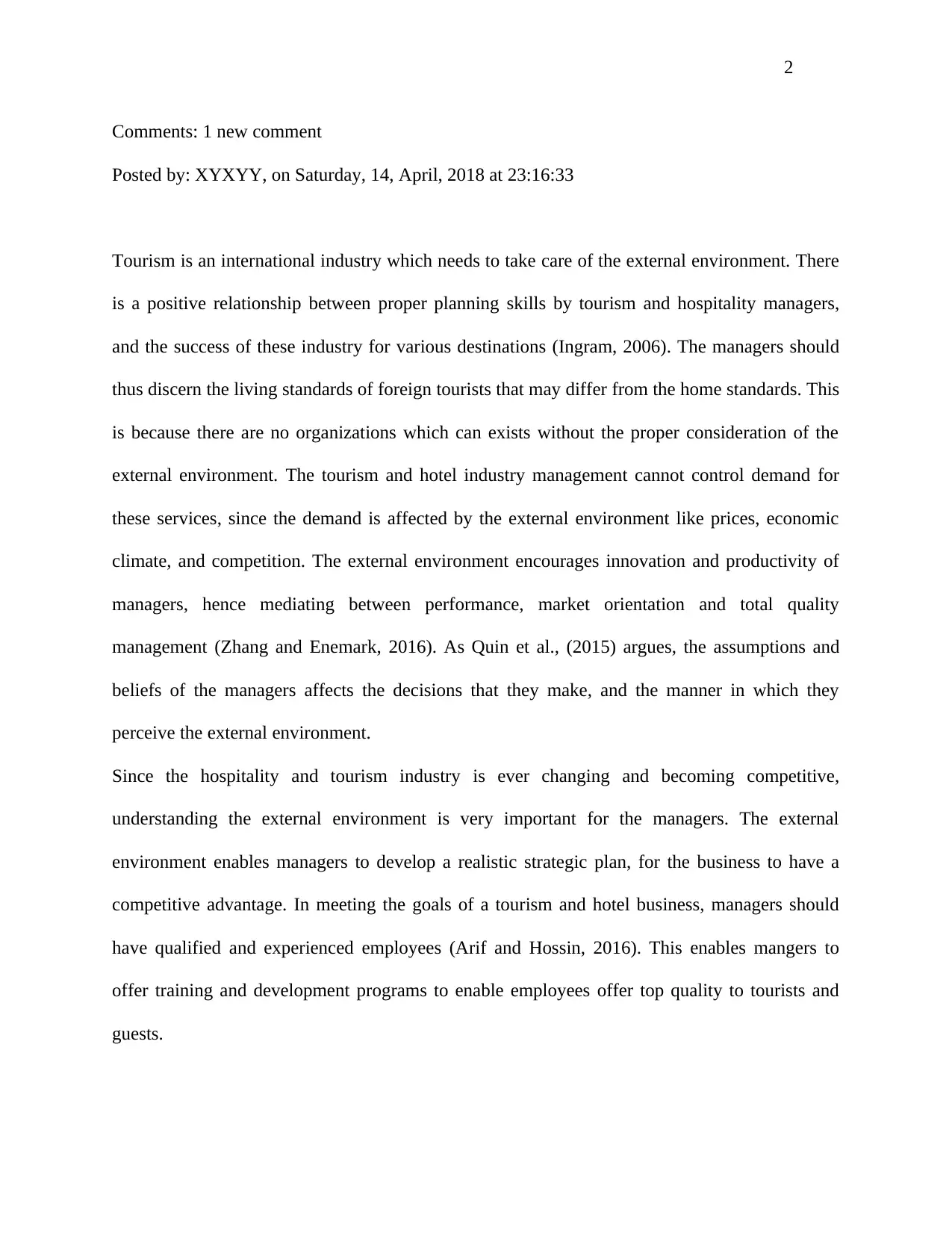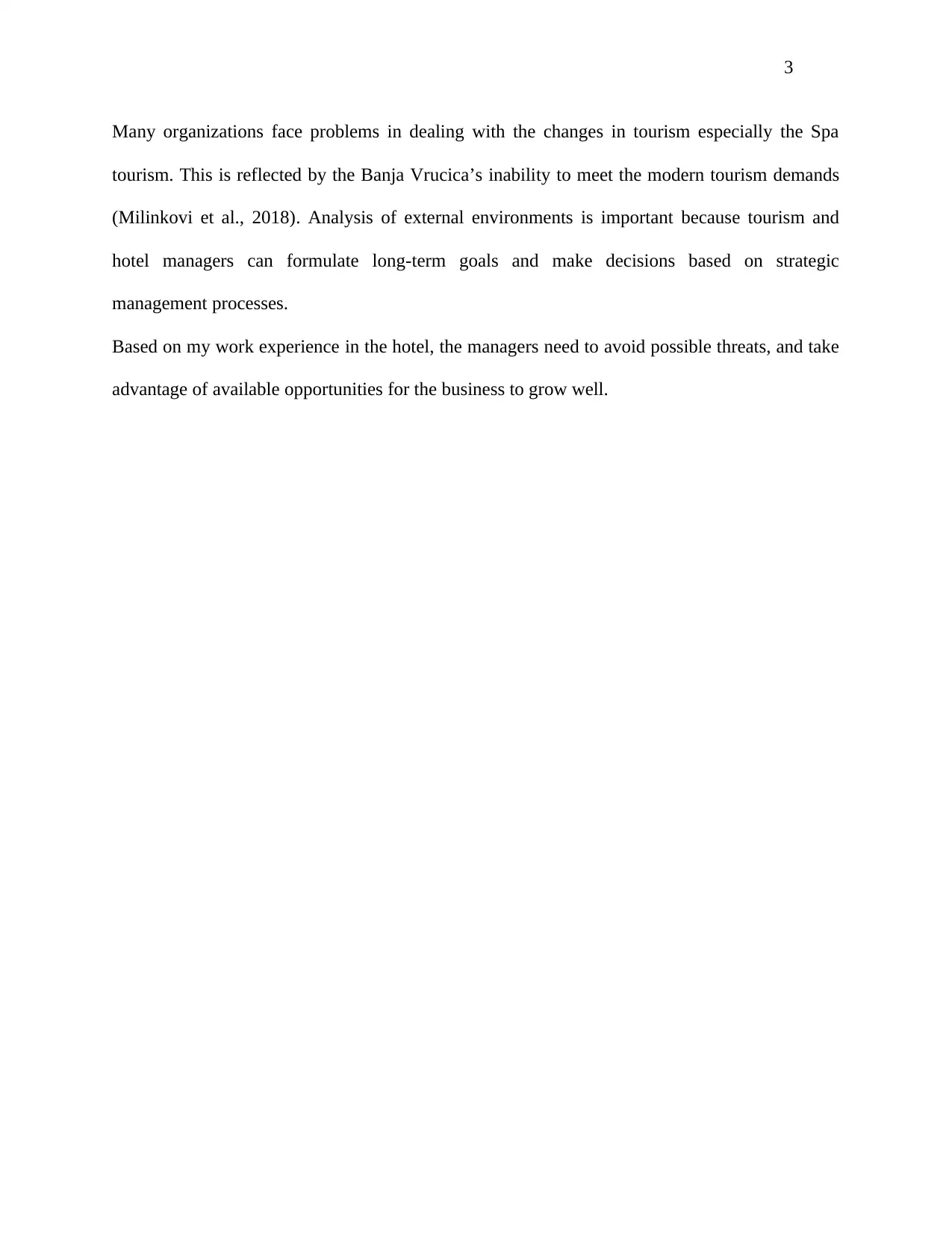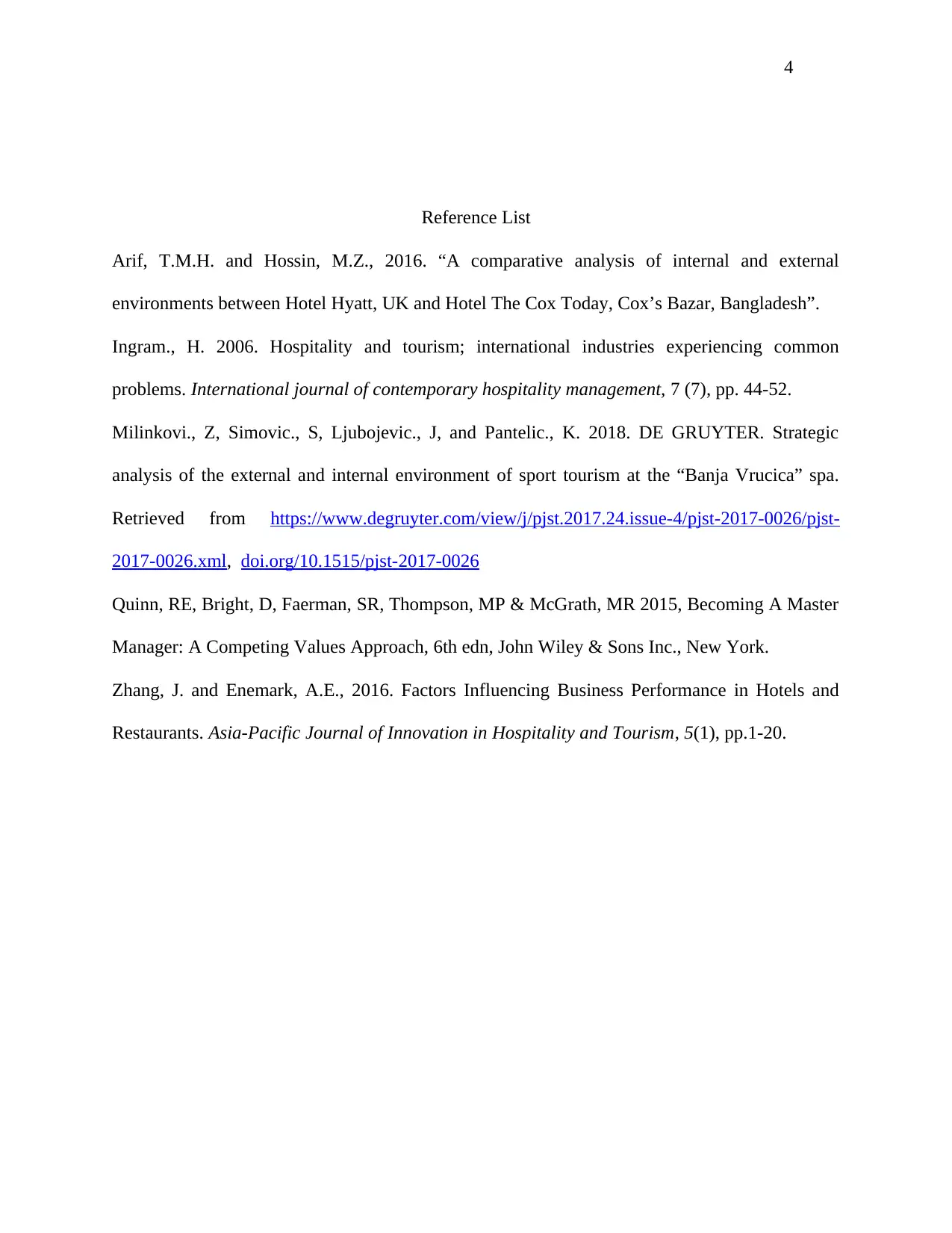External Environment Analysis for Tourism and Hospitality Management
VerifiedAdded on 2021/05/30
|4
|591
|37
Report
AI Summary
This report delves into the critical role of external environment analysis in tourism and hospitality management. It emphasizes the positive relationship between effective planning skills of managers and the success of destinations, highlighting the need to understand the living standards of foreign tourists. The report discusses how external factors such as prices, economic climate, and competition influence demand, innovation, and productivity. It also explores the importance of qualified employees and training programs. Furthermore, the report uses examples like Banja Vrucica's challenges and underscores the need for managers to formulate long-term goals and strategic decisions to gain a competitive advantage. The report references several sources and offers valuable insights into the dynamic nature of the tourism and hospitality industry.
1 out of 4











![[object Object]](/_next/static/media/star-bottom.7253800d.svg)